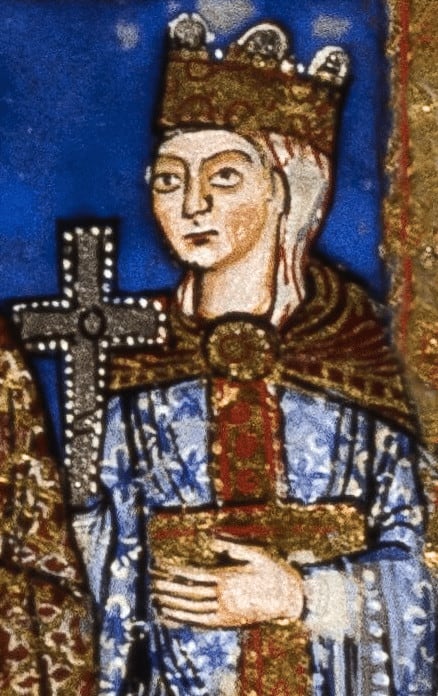History Bytes: Empress Matilda
In this series, I’ll be sharing some quick facts about some of history’s famous, infamous, and not-so-famous characters and places. Sometimes the chosen historical figures or locales relate to a book I’m reading; sometimes I write about them because they’re quite simply interesting. Either way, I’ve tried to add a bit of humor to the facts, but keep in mind that history always has two sides to every tale, and it’s important to think critically about and question history as a whole. Check out Resources for more information on your favorites!

Summary
Matilda’s Early Life
Empress Matilda bears the distinction of being the first English princess with the possibility of ascending the throne in post-Conqueror England. Matilda came from royalty on both her paternal and maternal sides. Her father King Henry I, son of William the Conqueror, married Matilda, the daughter of the Scottish king Malcolm III. Intelligent, strong-willed, and tenacious, her distinguished pedigree ensured she received some instruction in letters and spiritual matters.1Marjorie Chibnall, “Matilda [Matilda of England] (1102–1167), empress, consort of Heinrich V,” Oxford Dictionary of National Biography, 23 Sep. 2004, (accessed 4 Nov. 2022). https://www.oxforddnb.com/view/10.1093/ref:odnb/9780198614128.001.0001/odnb-9780198614128-e-18338.
Henry I arranged her marriage to the German King Henry V in 1108 or 1109, who became the Holy Roman Emperor in 1111. Matilda’s dowry of 10,000 silver marks helped fund Henry’s coronation in Rome. They married in 1114, but their marriage produced no children.
In 1120, disaster struck. A ship carrying William Adelin and other important nobles from Barfleur, Normandy to England sank in the English Channel. Of approximately 300 passengers, only two survived. As a result, the White Ship disaster precipitated a succession crisis in England.
Succession Crisis between Matilda and Stephen of Blois
Despite marrying Adeliza of Louvain, Henry failed to produce another legitimate son and heir. His options included a couple of nephews – William Clito, son of his eldest brother Robert Curthose, and Stephen of Blois, son of his sister Adela – and his daughter Matilda (who became a contender after the death of her first husband in 1125).2C. Warren Hollister, Henry I, edited by Amanda Clark Frost (New Haven: Yale University Press, 2001): 308-310, http://www.jstor.org/stable/j.ctt1bh4cv9. Although many considered Matilda’s sex an impediment to effective rule, Henry still had his courtiers swear to uphold her claim to the throne.
As it happens, royal successions don’t always go the way one plans. Upon Henry’s death in 1135, chaos erupted. According to C. Warren Hollister, Matilda and her second husband, Geoffrey, Count of Anjou, failed to immediately claim her English inheritance.3Ibid., 477. Her cousin Stephen of Blois consequently swooped in and seized the throne. Thus began a period in English history known as the Anarchy.
I won’t dive into it too much here, but History Extra wrote an excellent article summarizing the civil war. It was an immensely complicated affair, with courtiers and lands shifting sides in a veritable political and military chessboard. In the end, Stephen assumed the throne until his death in 1154. Afterwards, Matilda’s son Henry became king, and she died in 1167.
On the whole, Matilda’s story presents an incredible study on women in the medieval age. Like many medieval women, Matilda’s existence seemingly centers on the men in her life. Marjorie Chibnall writes that, “As a woman involved in politics she was assigned a woman’s place: important and influential, but limited, variable, and always secondary.”4Marjorie Chibnall, “The Empress Matilda and Church Reform,” Transactions of the Royal Historical Society 38 (1988): 107, https://doi.org/10.2307/3678969. And yet, she ultimately proved a formidable figure.
Basic Biographical Details of Empress Matilda
Full Name: Matilda of England
Title: Holy Roman Empress (as wife of the Holy Roman Emperor)
Born: c. February 7, 1102, England (possibly Sutton Courtenay or Winchester)
Died: September 10, 1167, Rouen, France
Spouse(s): Henry V, Holy Roman Emperor (m. 1114 – d. 1125); Geoffrey V, Count of Anjou (m. 1128 – d. 1151)
Children: Henry II, King of England; Geoffrey, count of Nantes; William FitzEmpress
Known For: Claiming the English throne after her brother went swimming in the English Channel and never resurfaced; not playing nicely with her cousin Stephen; and playing nicely with the Church.
Resources
Featured image: Rouen Cathedral, France (Getty Images/Fabianodp)

